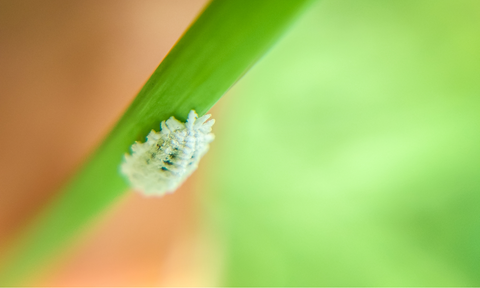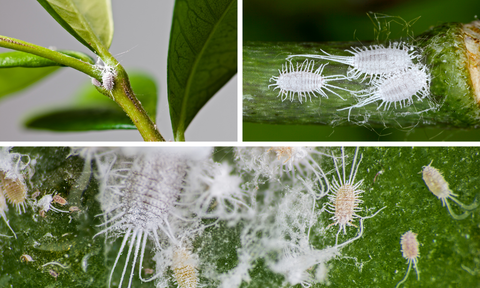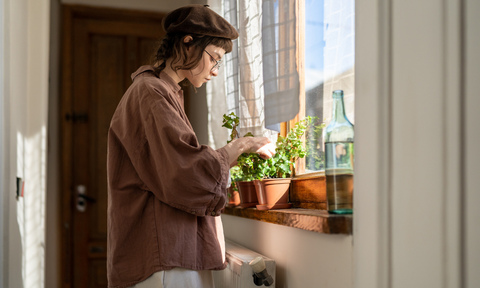The Ultimate Guide to Getting Rid of Mealybugs

Say Goodbye To Mealybugs on Indoor Plants
Mealybugs are those tiny, soft-bodied pests covered in a white, waxy substance and can be a real nuisance for gardeners and indoor plant collectors. They suck the sap from plants, weakening them and sometimes spreading diseases. But fear not! With the right approach, you can effectively control and eliminate these pests. Here’s your ultimate guide to getting rid of mealybugs.

Understanding Mealybugs
Before diving into eradication methods, it's important to understand your enemy. Mealybugs are small, sap-sucking insects that belong to the Pseudococcidae family. They are often found in warm, moist environments and can infest a wide range of plants.

Identifying Mealybug Infestation
Look for these signs:
- White, cottony masses on plants.
- Stunted growth or yellowing leaves.
- Sticky residue, known as honeydew, on leaves or nearby surfaces.

Natural and Chemical Control Methods
1. Isolation: If you find mealybugs on one plant, isolate it immediately to prevent spread.2. Manual Removal:
- Use a cotton swab dipped in rubbing alcohol or methylated spirits to wipe away the bugs.
- Rinse the plant with a strong stream of water.
- Introduce natural predators like the Cryptolaemus montrouzier (Australian native ladybird beetles) or lacewings into your space.
4. Insecticidal Soaps and Horticultural Oils:
- Apply insecticidal soap or neem oil, following the product's instructions.
- These are less harmful to beneficial insects and the environment.
5. Chemical Pesticides:
- As a last resort, use chemical pesticides.
- Always follow label instructions and consider the impact on beneficial insects and the environment.
- Please ensure you wear the correct protective gear and spray in an appropriate area. Chemicals, including pesticides, are no joke. They can be incredibly toxic to children, pets and adults.
Preventive Measures
1. Regular Inspection: Regularly check your plants for early signs of infestation.
2. Proper Plant Care:
- Keep your plants healthy; stressed plants are more susceptible to infestations.
- Avoid overwatering and/or overfertilising.
3. Quarantine New Plants: Always quarantine new plants before introducing them to your garden or home.
4. Cleanliness: Keep your indoor plant area clean. Remove any plant debris promptly.

Battling mealybugs can be challenging, but with persistence and the right approach, you can protect your plants from these pesky intruders. Whether you opt for natural methods or need to resort to chemical solutions, remember that the key to success is early detection and consistent treatment.
Happy gardening! 👋🌿
Frequently Asked Questions About Mealybugs
1. How long do mealybugs live?
Mealybugs typically live for about 2-3 months. During this time, they go through various life stages, from egg to adult. The lifespan can vary depending on environmental conditions.
2. Can plants recover from mealybug infestations?
Yes, plants can recover from mealybug infestations, especially if the problem is detected early and treated promptly. Good plant care practices and effective treatment strategies are key to recovery.
3. What plants are most susceptible to mealybugs?
Mealybugs can infest a wide range of plants but are commonly found on succulents, orchids, ferns, citrus trees, and various indoor plants. Plants in warm and humid environments are particularly susceptible.
4. How do you kill mealybugs in Australia?
In Australia, mealybugs can be controlled using methods such as manual removal, using a cotton swab dipped in methylated spirits or rubbing alcohol, applying insecticidal soap or neem oil, and introducing natural predators like native ladybugs and chemical pesticides such as Baythroid & Conguard. Always check for and comply with local regulations regarding pesticide use.
5. What causes mealybug infestations?
Mealybug infestations can be caused by various factors, including bringing infested plants into your home or garden, overwatering, over-fertilisation, and a lack of natural good predators in the environment. Overwatering and over-fertilising do not directly cause mealybug infestations. However, they can create conditions that make plants more susceptible to these pests.
6. What is the best killer for mealybugs?
The best method for killing mealybugs may vary depending on the severity of the infestation and the type of plants affected. Natural methods like neem oil and insecticidal soap are often effective, while in severe cases, chemical pesticides may be necessary.
7. Are mealybugs dangerous to humans or pets?
Mealybugs are not dangerous to humans or pets. However, they can cause significant damage to plants and can be a nuisance if they infest indoor plants.
8. Can mealybugs spread to other plants?
Yes, mealybugs can easily spread to other plants, especially if they are in close proximity. It's important to isolate infested plants and treat them to prevent the spread.
9. How can I prevent mealybugs from infesting my plants?
Preventive measures include regular inspection of plants, proper plant care to avoid stress, quarantining new plants before introducing them to your garden or home and maintaining cleanliness to reduce the chances of infestation.
Read Next: The Ultimate Guide To Spidermites










